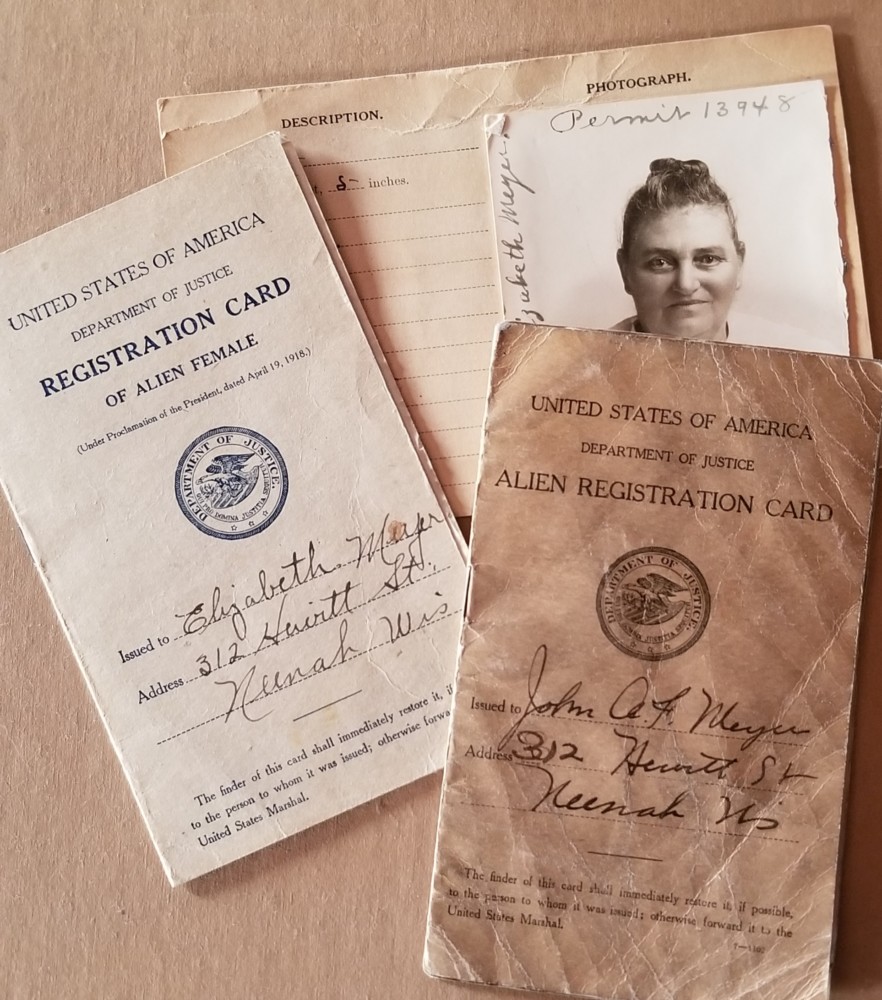Tracing Our Paths: Neenah’s Immigration Stories
Neenah Historical Society’s newest exhibit opens May 9
By Jane Lang, executive director of Neenah Historical Society, and Steven T. Sheehan, associate professor of history at UWO, Fox Cities Campus
We are a nation of immigrants. That truth has been part of the fabric of our country and our local community from their earliest days. What is it that drew and continues to draw people from around the world to this land we call home? What did they leave behind and why did they make significant sacrifices to come? How have successive waves of immigrants shaped the history of the Fox Cities region? How have established residents responded to new immigrants? This year, the Neenah Historical Society has created a new and highly interactive exhibit titled “Tracing Our Paths – Neenah’s Immigration Stories” to highlight the lives and significance of immigrants throughout our community’s history.
The 1851 “Emigrant’s Hand Book and Guide to Wisconsin,” offered both encouragement and cautionary tales to those considering a move to the Badger State and the Fox Cities. The book admonished immigrants to “shun” the “dangers” of America’s Eastern Seaboard cities, such as the “over two thousand grog shops and fashionable drinking saloons of New York,” and instead to quickly turn their attention to the “fertile prairies and beauteous openings” of Wisconsin.
Once arrived in the region, an immigrant could take advantage of opportunities in settings like Neenah, “a place of considerable importance, commercially, as well as for its hydraulic power” with a “flourishing mercantile trade…a three-story hotel, a commodious flouring mill, two saw mills, a foundry, and a sash (window) factory.” If faced with homesickness or disappointment, the guide warned immigrants against “murmuring or becoming disheartened,” and encouraged them instead to forge ahead and “be thankful that God in his Providence has left an unmistakable mark on the map of the World, that guides the homeless and the destitute to a place of refuge.”
Those words of inspiration and warning would have resonated with John Bergstrom of Norway. From this diary, when Bergstrom, corresponding with a friend who lived in Menasha, asked if he should emigrate to the Fox Cities, the reply “was so favorable that with no further information my parents forthwith began preparations for the journey which they well knew would be long and full of hardships.” “Tracing Our Paths” will re-create the promising and perilous voyages of many of these early immigrants.
While “Tracing Our Paths” will offer the chance to learn more about Bergstrom and other notable Fox Cities settlers, it will also tell the stories of individuals like Signe Torsteinsdatter Boehm. In 1911, young Ms. Torsteinsdatter travelled by herself across the Atlantic to work first in a shoe repair shop in Blair, Wisconsin, and later as a hotel maid and cook in Eau Claire. She relocated to the Fox Cities and married George Boehm in 1915. Today, her grandchildren can still recall her descriptions of how she built her life in a new world. Through documents, photos, objects and oral histories, “Tracing Our Paths” tells the story of how brave women and men of humble origins, like Torsteinsdatter, helped to shape our communities.
Fox Cities immigrants persisted through numerous challenges and obstacles. Many have had to adjust to new languages and significant cultural differences. During the world war years, a tremendous amount of anxiety over those of German descent led to registrations and monitoring of hundreds of local residents. To this day, immigrants must negotiate changes in federal policy and misconceptions from the majority culture. The exhibit will explore how, through it all, immigrants have straddled the fine line between assimilating to their new homes and maintaining a distinct cultural identity.
“Tracing Our Paths” will also offer a venue for today’s immigrants to share their stories. Curtis Brown (1921-2019), a Holocaust survivor who faced unspeakable circumstances in Austria and Hungary during World War II, made his way to the U.S. in 1947, and eventually settled in Neenah. Hansa Joshi arrived from India to Wisconsin on a cold February day in 1959. A trio of current Neenah Menasha Fire Rescue firefighters — Jaime Martinez, Anthony Leiton and Xiong Yang — all come from immigrant origins.
American history and the history of the Fox Cities is the story of immigrants. Their stories teach us about overcoming struggles and adapting to change. They tell us how our past and our present have been shaped by continuing waves of new arrivals from foreign shores. In the end, the history of immigrants and immigration helps us to understand what makes us American and why that is important.
“Tracing Our Paths” will provide an opportunity for visitors to examine the experiences, thoughts and accounts of the immigrants who have called this place their home over the past 175 years. The exhibit will open to the public on May 9 and will be in place at the Neenah Historical Society’s Octagon House until the fall of 2022. Please visit neenahhistoricalsociety.com for more information. Generous funding for this exhibit was provided by the Wisconsin Humanities Council and the Community Foundation for the Fox Valley Region.
Photos courtesy of the Neenah Historical Society













Leave a Comment